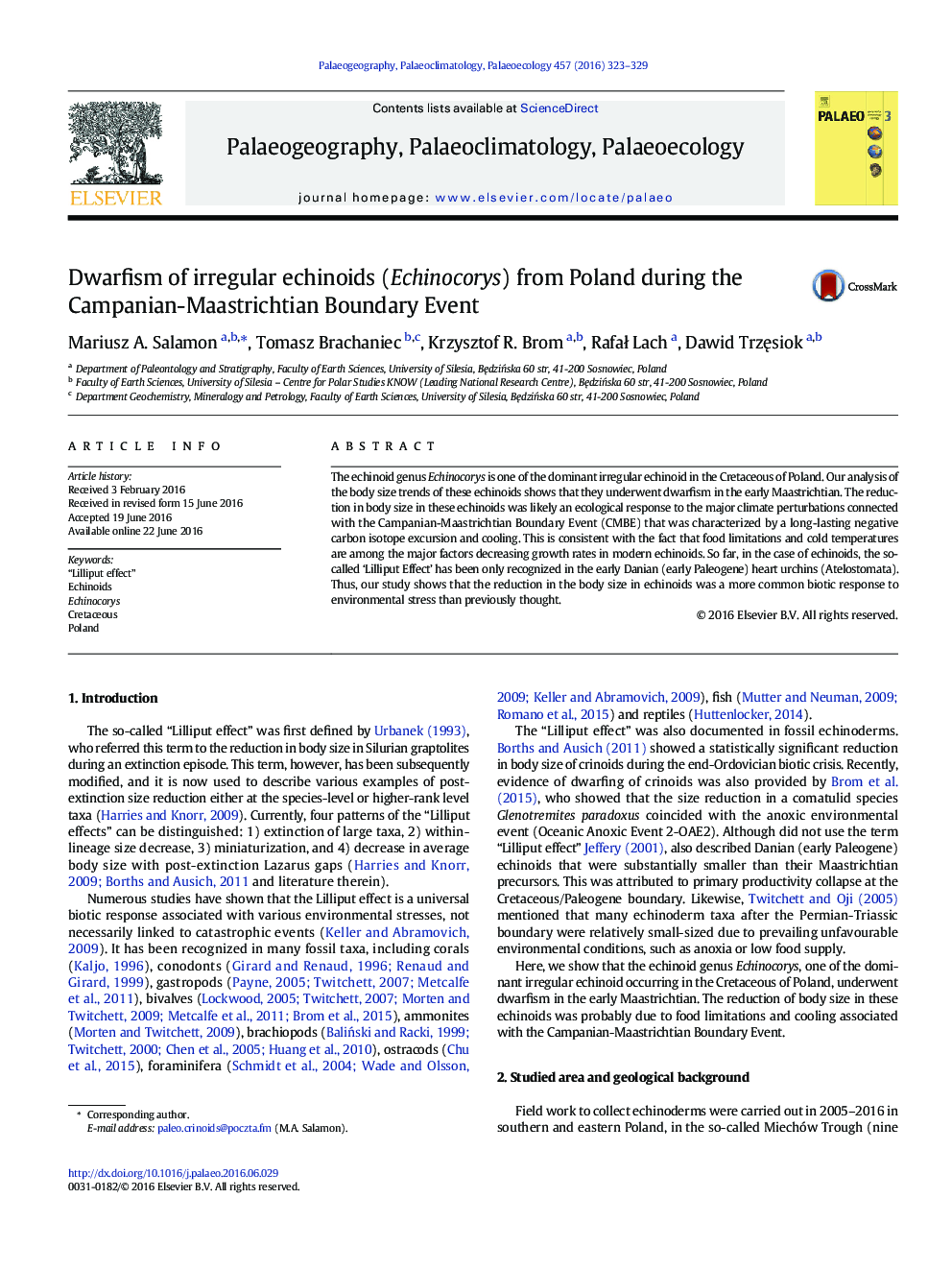| Article ID | Journal | Published Year | Pages | File Type |
|---|---|---|---|---|
| 6349196 | Palaeogeography, Palaeoclimatology, Palaeoecology | 2016 | 7 Pages |
â¢Echinocorys echinoids underwent 'Lilliput Effect' dwarfism type.â¢Reduction in body size was response to the cooling during Campanian-Maastrichtian Boundary Event (CMBE).â¢In the upper Maastrichtian echinoids return to pre-event size (non-dwarfed) in response to climate warming.â¢'Lilliput Effect' is adaptation to unfavourable environmental conditions.
The echinoid genus Echinocorys is one of the dominant irregular echinoid in the Cretaceous of Poland. Our analysis of the body size trends of these echinoids shows that they underwent dwarfism in the early Maastrichtian. The reduction in body size in these echinoids was likely an ecological response to the major climate perturbations connected with the Campanian-Maastrichtian Boundary Event (CMBE) that was characterized by a long-lasting negative carbon isotope excursion and cooling. This is consistent with the fact that food limitations and cold temperatures are among the major factors decreasing growth rates in modern echinoids. So far, in the case of echinoids, the so-called 'Lilliput Effect' has been only recognized in the early Danian (early Paleogene) heart urchins (Atelostomata). Thus, our study shows that the reduction in the body size in echinoids was a more common biotic response to environmental stress than previously thought.
